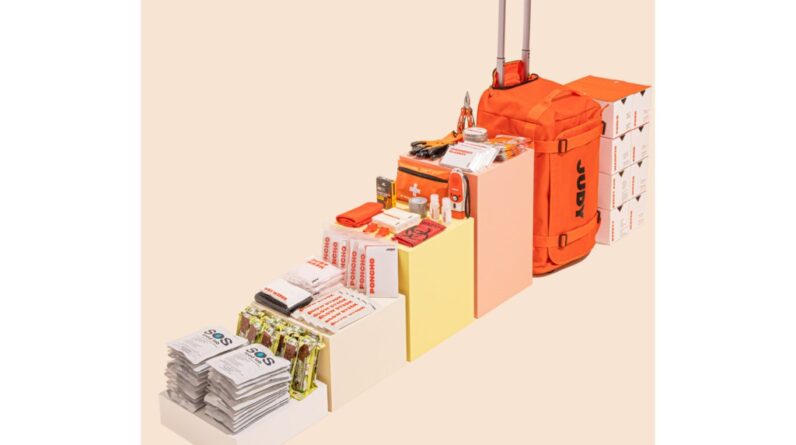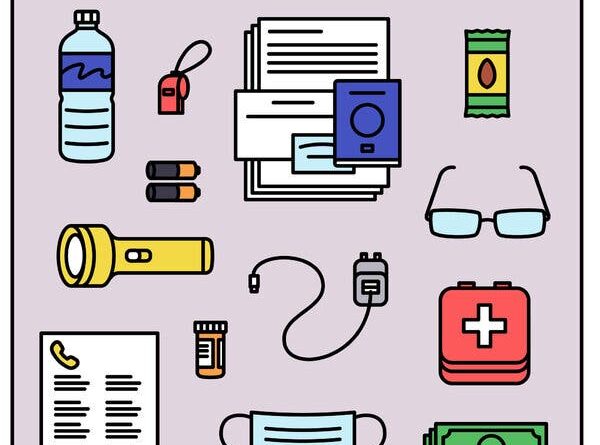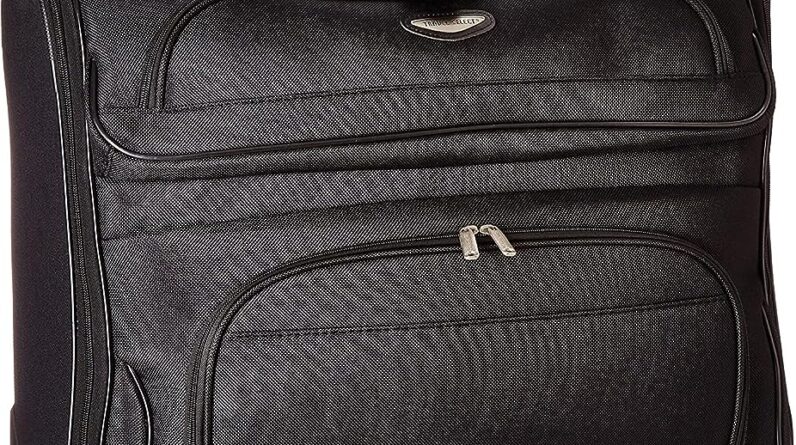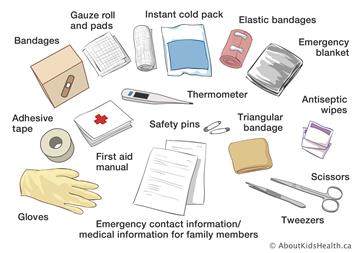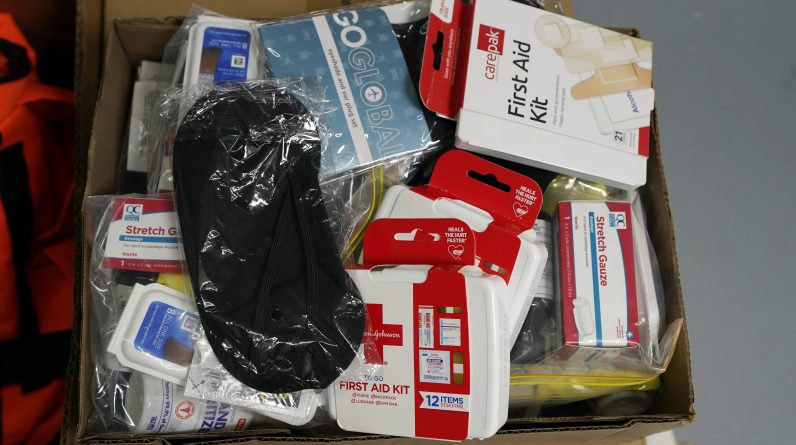
In times of uncertainty, it’s crucial to be prepared for any emergency that may arise. One question that often comes to mind is whether or not to include important documents in your emergency kit. It’s a decision that requires careful consideration, as these documents can be valuable in various situations. You may find yourself wondering if it’s really necessary, or if there are alternative options. This article aims to provide insights into the importance of including important documents in your emergency kit and offer some guidance on what documents to include. By the end, you’ll have a clearer understanding of whether this is a step you should take in your emergency preparedness efforts.

This image is property of ul.safetyactioncenter.pge.com.
Benefits of including important documents in your emergency kit
Ensuring quick access to important information
Including important documents in your emergency kit can greatly facilitate access to crucial information during a crisis. By keeping all your necessary documents in one place, you can save precious time and avoid the stress of searching through various locations to gather important information.
Helping with identification and verification
In emergency situations, it is vital to have proper identification and verification documents readily available. These documents could include your driver’s license, passport, birth certificate, or social security card. Having them in your emergency kit ensures that you can prove your identity quickly and easily, which can be important in accessing resources, receiving assistance, or dealing with legal matters.
Facilitating communication and legal processes
In times of crisis, effective communication is essential. Including important documents such as your contact information, emergency contacts, and any legal documents you may need can help streamline communication processes. This can be particularly crucial when dealing with authorities, insurance companies, or medical professionals who require specific information to provide the necessary assistance.
Important documents to consider including in your emergency kit
Identification documents
Ensure you include copies of essential identification documents in your emergency kit. These may include your driver’s license, passport, birth certificate, social security card, or any other documents that prove your identity and citizenship. Remember to keep copies rather than original documents, as losing them could cause significant issues.
Financial documents
Including important financial documents in your emergency kit is crucial for various reasons. These may include copies of your banking information, credit card details, mortgage or rental agreements, investment or retirement account information, and any other financial documents that may be necessary during an emergency. Having these documents readily available can help you access funds or communicate with financial institutions if needed.
Insurance documents
Insurance policies can provide crucial coverage during emergencies. Include copies of your health insurance, property insurance, auto insurance, or any other relevant policies in your emergency kit. These documents can help you understand your coverage, initiate claims, and communicate with insurance providers when necessary.
Medical documents
Medical documents play a vital role during emergencies, especially if you have pre-existing health conditions or require regular medication. Include copies of your medical records, prescriptions, and any relevant health information in your emergency kit. These documents can aid medical professionals in providing appropriate care and ensure your specific medical needs are met.
Legal documents
Certain legal documents are essential to have in your emergency kit to address legal matters effectively. This may include copies of your will, power of attorney documents, deeds or rental agreements, and any other legal paperwork that might be crucial during emergencies. Having these documents readily available can help facilitate legal processes and ensure your wishes are followed in case of incapacitation or unforeseen circumstances.
Contact information
Including a comprehensive list of important contact information is essential. This should include emergency contact numbers, the contact details of your family members or close friends, your primary healthcare provider, insurance agents, legal representatives, and any other individuals or organizations you may need to reach out to during an emergency. Having this information readily available can be of immense help when communication systems may be compromised.

This image is property of preparemanila.org.
Tips for organizing and protecting important documents in your emergency kit
Use waterproof and fireproof containers
It is crucial to protect your important documents from potential damage caused by water or fire. Consider storing your documents in waterproof and fireproof containers or investing in document pouches designed to protect against these hazards. This ensures that even if your emergency kit is exposed to water or fire, your important documents remain intact and legible.
Make digital copies of the documents
Creating digital copies of your important documents adds an extra layer of protection. Scan or photograph each document and store them in a secure, password-protected electronic format. You can store these digital copies on an external hard drive, a USB flash drive, or securely in cloud storage. This way, even if the original physical copies are damaged or lost, you can still access your important information.
Create a detailed inventory of the documents
Keeping a detailed inventory of the documents included in your emergency kit can help you quickly assess what is missing or needs updating. Include a list of the documents, the date they were included, and any relevant notes or instructions. This inventory will help you maintain and review the contents of your kit regularly.
Keep the documents up to date
Regularly review and update the documents in your emergency kit to ensure they reflect your current circumstances. Replace expired identification documents or insurance policies promptly and make sure any changes in your contact information or legal documents are reflected in your kit. Keeping everything up to date will save time and prevent complications during emergencies.
Secure the documents in a safe location
Choose a secure location to store your emergency kit, preferably one that is easily accessible to you. It is also wise to inform a trusted individual, such as a family member or close friend, about the location of your emergency kit in case you are unable to access it yourself. Additionally, consider storing copies of your important documents in a safe-deposit box at a bank for added security.
Considerations for deciding to include cash in your emergency kit
Advantages of including cash
Cash is a valuable resource during emergencies when electronic payment systems may be unavailable or compromised. Including cash in your emergency kit ensures that you have a readily accessible method of payment to purchase necessary supplies or services when other forms of payment may not be possible.
Potential risks of including cash
While cash can be useful during emergencies, it is not without its risks. Carrying a large sum of cash can attract the attention of thieves or increase the likelihood of loss or misplacement. It is essential to strike a balance between having enough cash for emergencies and considering the potential risks associated with its inclusion in your kit.
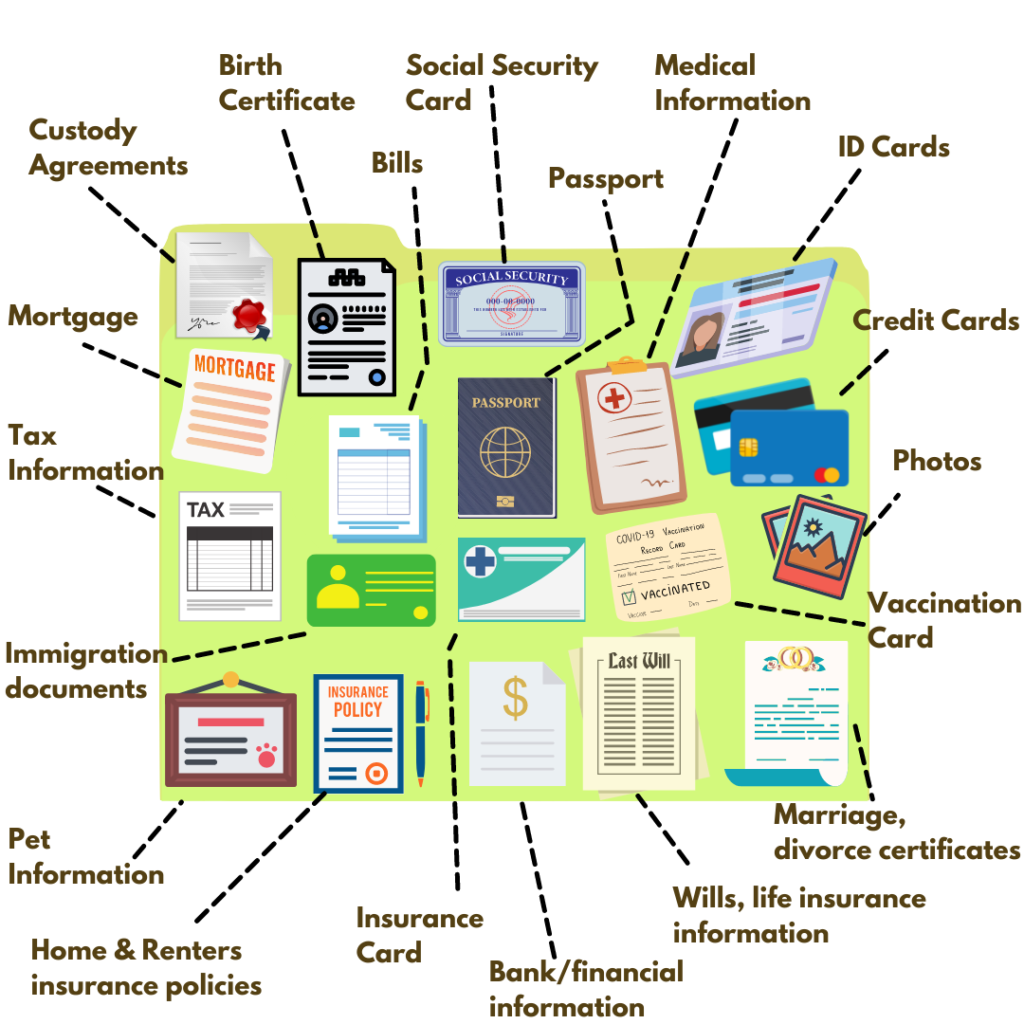
This image is property of disasterlegalservicesca.org.
How much cash to include in your emergency kit
Assessing your personal needs and circumstances
Determining how much cash to include in your emergency kit depends on your personal needs and circumstances. Consider factors such as the size of your family, the length of time you anticipate needing emergency supplies, and the availability of other resources in your area. Assessing your needs realistically will help you determine an appropriate amount of cash.
Calculating for essential expenses
Calculate your essential expenses for a certain period, such as a week or a month, during an emergency. These expenses may include food, water, medical supplies, transportation costs, temporary accommodation, and any other necessities. Once you have a clear estimate of your essential expenses, consider including enough cash to cover these costs.
Considering potential scenarios
Anticipating potential emergency scenarios can also help you determine how much cash to include. For example, if you live in an area prone to natural disasters or frequent power outages, consider including more cash than someone living in an area with fewer emergencies. Assessing the likelihood and severity of potential emergencies can guide you in making an informed decision.
Alternatives to including cash in your emergency kit
Emergency credit card
Having an emergency credit card designated solely for unforeseen circumstances can be a viable alternative to carrying cash. Ensure that the credit card has a sufficient credit limit to cover your estimated essential expenses and keep it separate from your regular, everyday credit cards. Store the card with your important documents or in a secure location.
Prepaid debit card
Acquiring a prepaid debit card specifically for emergencies allows you to preload funds and have a secure method of payment without the need to carry cash. These cards work like regular debit cards and can be used for purchases or withdrawals at ATMs. Research different options and choose a card with low fees and reputable security features.
Bartering items or skills
While cash is commonly used for transactions, consider including items or skills that could be useful for bartering in your emergency kit. Non-perishable food items, water purification tablets, first aid supplies, tools, or even skills such as medical expertise, carpentry, or electrical knowledge can be valuable commodities in times of crisis.

This image is property of ul.safetyactioncenter.pge.com.
Information security and privacy considerations
Protecting sensitive information
When including important documents in your emergency kit, it is crucial to protect sensitive information from falling into the wrong hands. Use opaque envelopes or folders to prevent others from easily viewing or accessing your private information. Additionally, consider shredding or securely disposing of any unnecessary documents to minimize the risk of identity theft.
Securing digital copies
If you choose to keep digital copies of your important documents, ensure that they are stored securely. Use strong, unique passwords to protect your electronic files and consider encrypting the files for an extra layer of security. Regularly back up your digital copies and keep them separate from your physical emergency kit to prevent both from being compromised at once.
Regularly updating passwords and encryption
To maintain information security, regularly update the passwords for your electronic files and consider changing them immediately if you suspect any compromise. Additionally, stay informed about the latest encryption techniques and technologies to ensure your digital copies remain protected against potential security breaches.
Maintaining and reviewing your emergency kit
Regularly check and update the contents
It is essential to check and update the contents of your emergency kit regularly. Review the included documents, their condition, and expiration dates. Replace any expired documents, update contact information, and ensure all the necessary documents are still relevant and accurate. Set a reminder to periodically review and update your kit, aiming for at least once a year.
Review and replace expired documents or information
Expired documents can be problematic during emergencies. Make it a habit to keep track of the expiration dates of identification documents, insurance policies, and other time-sensitive items. Mark your calendar or set reminders to review and replace expired documents promptly to ensure your emergency kit remains up to date.
Consider professional assistance or advice
If organizing and maintaining your emergency kit feels overwhelming, consider seeking professional assistance or advice. Financial planners, attorneys, or emergency preparedness experts can guide you in creating a comprehensive emergency kit tailored to your needs. Their expertise can ensure you cover all crucial aspects and provide peace of mind during uncertain times.

This image is property of mycalcas.com.
Importance of having an emergency plan
Creating an emergency communication plan
In addition to including important documents, having an emergency communication plan is essential for coordinating with family members and friends during emergencies. Designate a specific individual as the central point of contact and establish alternative methods of communication in case traditional channels are unavailable. Share this plan with all members of your household and make sure everyone understands their roles and responsibilities.
Designating emergency meeting locations
In certain emergencies, it might not be possible to communicate effectively or stay at home. Establish designated emergency meeting locations in your community where family members or friends can gather if separated. These locations should be easily accessible and familiar to all parties involved. Regularly review and update these meeting locations as needed.
Identifying emergency contacts
Alongside your emergency communication plan, identify and gather the contact information of key individuals who can provide assistance during emergencies. This may include local authorities, utility companies, healthcare providers, insurance agents, and family or friends living outside your immediate area. Having these contacts readily available will help you reach out for help if necessary.
Conclusion
Finding the right balance between including important documents and other necessities in your emergency kit is crucial. By ensuring quick access to essential information, including identification and verification documents, and facilitating communication and legal processes, you are better prepared to handle emergencies. Organizing and protecting your documents properly, considering alternatives to cash, and maintaining an up-to-date kit will provide peace of mind during uncertain times. Remember to continuously evaluate and adjust your emergency kit to meet your changing personal circumstances. By prioritizing safety and preparedness, you become better equipped to handle any unexpected situations that may arise.

